He Survived One of the Deadliest Shark Attacks Ever —Surgeons Couldn’t Believe What They Were Seeing and Thought He Should Be Dead
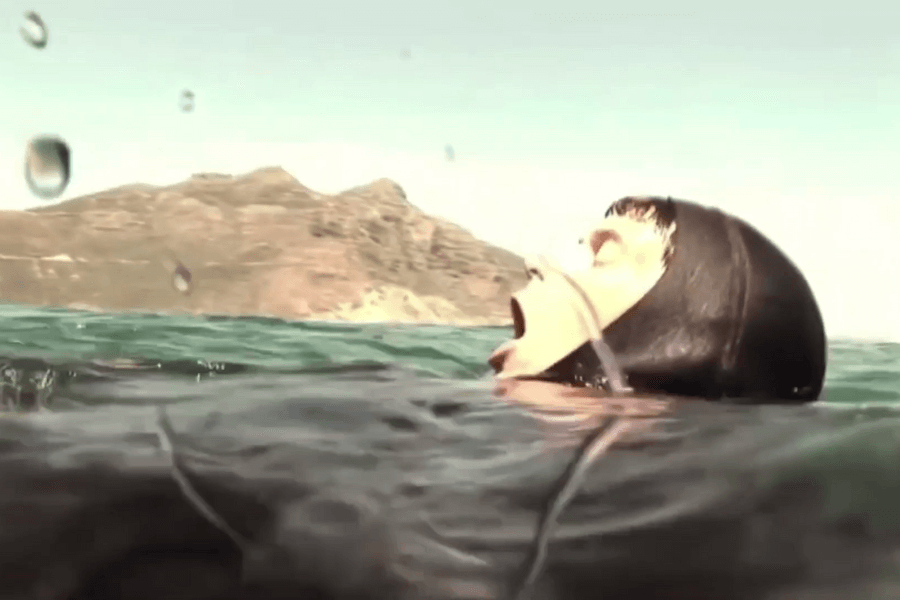
He was ripped from the surface by a great white shark, his body torn apart in seconds. Bleeding, drowning, and barely conscious, he fought back. When he reached land, surgeons prepared for a corpse, not a survivor. What they saw on the operating table defied logic. And he wasn’t done fighting.
Trapped in the Jaws of a Monster

It all started when Rodney Fox joined a spearfishing competition in 1963. The waters were calm, his aim was sharp, and nothing suggested he was moments away from confronting a nightmare made of teeth.
Without warning, a great white shark slammed into him, clamping onto his torso with crushing force. The water exploded around him, his body pierced by hundreds of serrated teeth, pain erupting like fire.
It didn’t nibble—it devoured. Dragged below, ribs cracked and flesh tore as the predator twisted him underwater. He wasn’t a diver anymore—just something struggling in the mouth of an apex predator.
Dragged Beneath the Surface
The ocean, once tranquil, became a blur of pain and pressure. Rodney was pulled deeper, the shark’s grip relentless, his lungs burning. He couldn’t think—only feel: searing pain, cold water, terror.
He realized the only vulnerable point on the shark’s armored body: its eyes. With what little strength he had, he clawed at its face, jamming his fingers toward the eye socket.
Amazingly, it worked. The shark recoiled. Its grip loosened. Blood clouded everything—his own. Rodney broke free, lungs screaming for air. But freedom was brief; something darker was coming next.
The Desperate Fight for Survival

As he swam upward through the red haze, Rodney glanced beneath him and saw the shark returning. Its jaws opened wide and surged upward in a blur of white and muscle.
He knew one more bite would kill him. He had already lost too much blood. Survival now depended on instinct, not strength. So he did the only thing he could.
Rodney kicked toward the shark’s head, hoping to scare it off. He missed the mark, grazing it instead. He braced for impact, then something strange happened that changed everything.
Blood in the Water: A Deadly Trail
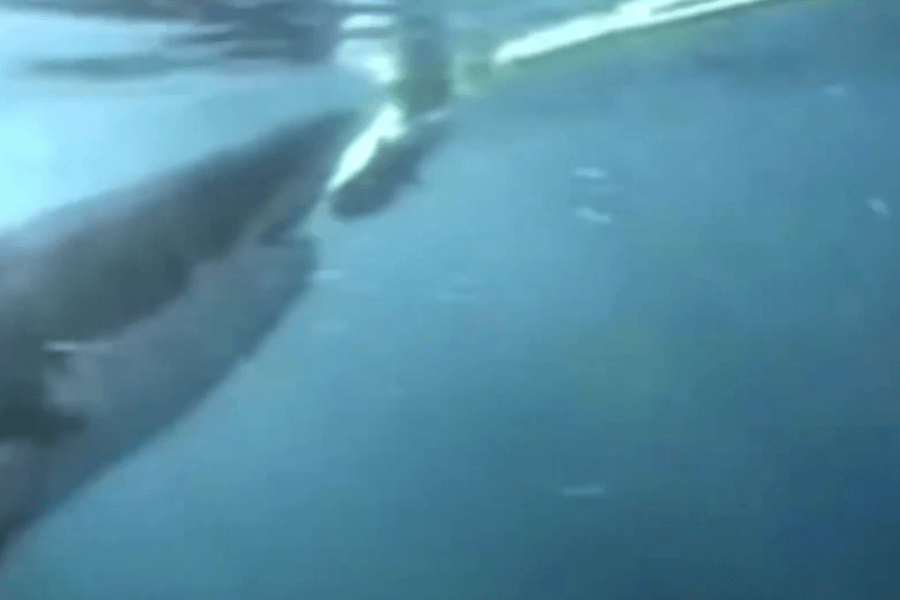
Instead of finishing him, the shark veered away. Distracted by the fish Rodney had already speared, it lunged past him and swallowed his fish float whole before disappearing into the deep.
He was alive but just barely. His torso was shredded, blood spilled from massive wounds, and the ocean beneath him was thick with crimson. He knew time was vanishing fast.
Every stroke toward the surface came with agony. His only goal was air, then the boat. But his body was weakening, and the blood trail he left was a beacon for more danger.
Caught by the Line
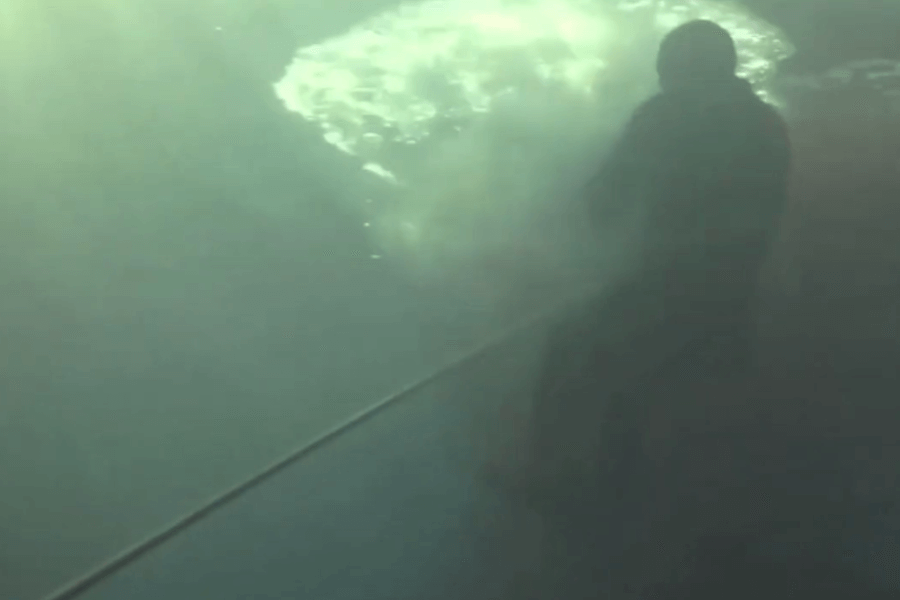
Rodney thought the worst was over, but the ocean had one more trap. The line attached to his weight belt suddenly jerked tight. Something below was pulling him fast and deep.
Having swallowed the fish and float, the shark had become entangled in the line, dragging Rodney back into the depths. He was no longer bleeding freely, but now he was drowning.
Panicked, he reached for the belt’s release. His fingers clawed at the buckle, but couldn’t find it. He was being pulled back into darkness with no air and no control.
A Final Miracle Beneath the Surface
Every second underwater drained his strength. He was out of air, vision blurring, body screaming. Death felt closer now than during the shark attack. Drowning, not biting, might be the end.
Then—release. The line snapped! Just like that, the force pulling him vanished. He stopped sinking. Stopped struggling. For one moment, everything was still. Then instinct kicked in again.
Rodney kicked upward, lungs burning, light shimmering above. He wasn’t thinking anymore—just surviving. One last ascent, one final push toward the surface where his life might continue if it was still waiting.
The Surface and the Scream
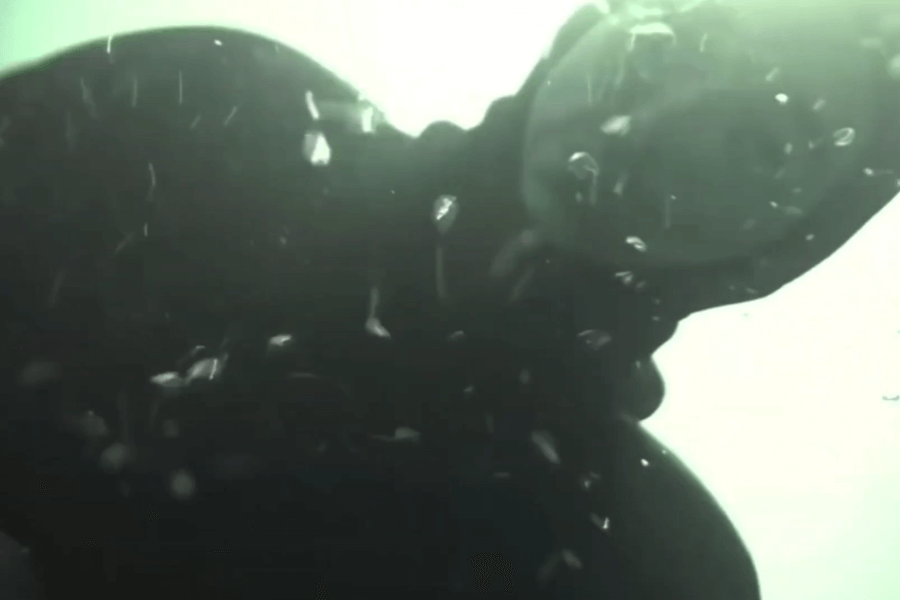
He broke through the water, gasping, eyes wide, chest heaving. The sky was blinding, the air sharp in his lungs. His mind caught up just enough to form one word.
“Shark!” he screamed, over and over. His voice was hoarse, frantic. Every cell in his body wanted to alert the others—to warn them, to anchor himself in reality.
He was alive. Bleeding, broken, barely floating, but alive. He kept being pulled downwards as he felt the pain all over his body.
Breaking Free Against All Odds

Rodney emerged from the water again, gasping. His body floated more from willpower than buoyancy. With every movement, he felt torn skin and exposed bone grinding against itself. He was still bleeding heavily.
He was close to blacking out, but something primal kept him awake. The boat was nearby; he just needed to hold on. His survival instinct roared louder than the pain.
Though he had escaped the shark, the fight wasn’t over. He was still adrift in the sea, injured beyond reason. He had minutes—if that—to reach safety before it was too late.
Swimming Through Pain Toward Life

The boat never looked so far away. His legs barely kicked, his arms barely moved, but Rodney swam with the last fragments of life he could summon. The water pulled at him.
Every second dragged, and his vision blurred. But he knew giving up meant sinking into silence forever, so he pushed forward, driven by the memory of the shark and raw survival instinct.
When hands finally reached into the water to grab him, he could no longer speak. He was only aware of one thing: he was out of the sea—but not of danger.
Hauled Onto the Boat—Barely Alive
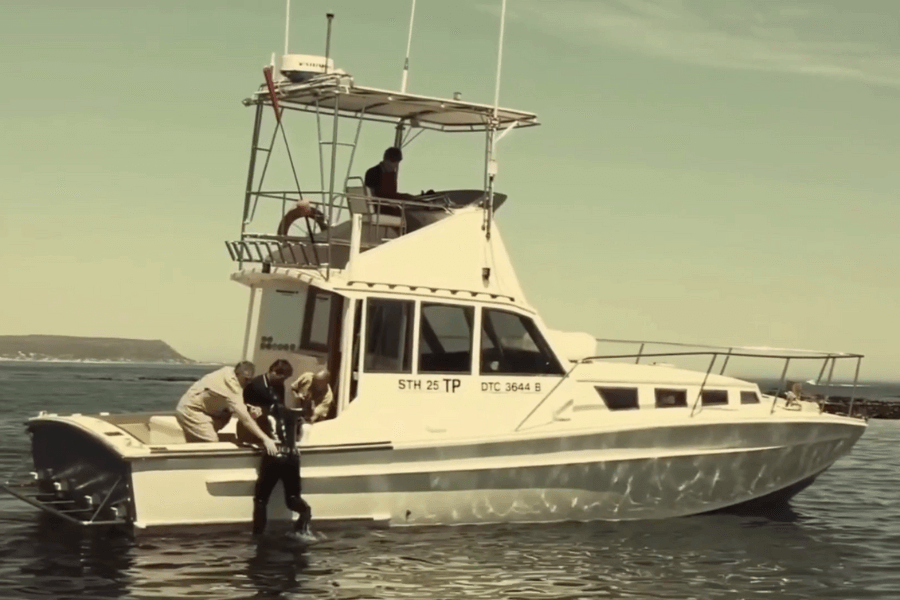
The crew saw the blood before they saw him. When they pulled him aboard, they were met with a body torn open, bones visible, wetsuit in tatters. Rodney Fox looked near death.
He collapsed on the deck, barely breathing. Some thought he wouldn’t make it. His wounds were so extensive that it was hard to believe anyone could survive them, especially without immediate medical help.
Still, he was conscious. Eyes open, heart still beating. They rushed toward shore. But Rodney’s fight was only just the beginning. What happened next would test the limits of human endurance.
Crew in Shock: A Horror Beyond Belief
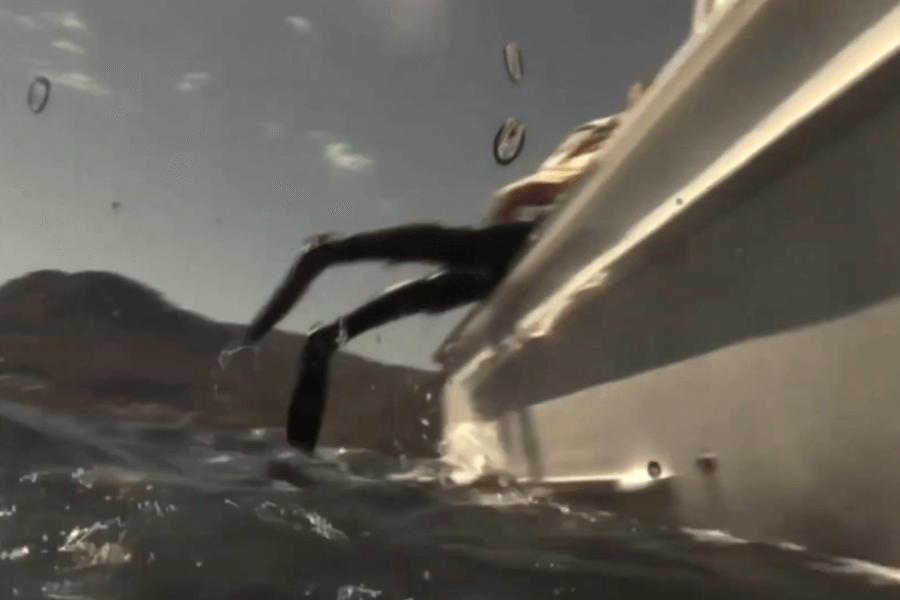
The crew stared in disbelief—what they saw didn’t seem human. His chest was torn open. Bones visible. Blood everywhere. No one moved at first.
Some turned away. Others shouted for towels, help, anything. They’d seen accidents, but this was different. It wasn’t an injury. It was devastation. And yet, somehow, Rodney was still conscious.
They worked to stop the bleeding, applying pressure wherever they could. But everyone had the same unspoken thought: he wouldn’t make it. Still, they had to try. Fast.
Holding On as Time Slipped Away
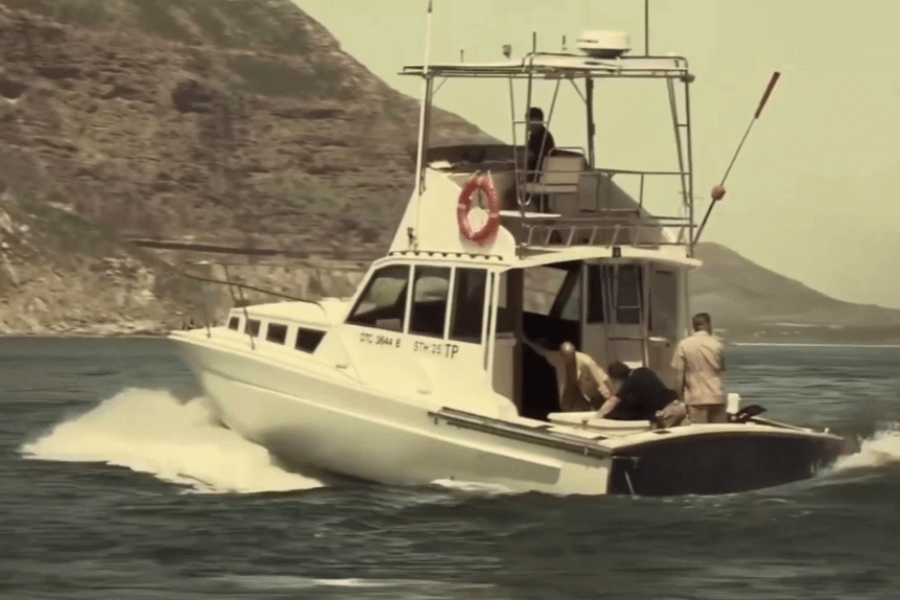
Rodney lay still, barely able to speak. His breathing grew shallow, his skin pale. Time moved slowly. Minutes stretched. The boat raced toward shore, but the damage had already been done.
His body temperature dropped. The blood loss was massive. One of the crew kept talking to him—begging him to stay awake, to stay with them. It was all they could do.
Rodney drifted in and out. Each moment felt like the last. But even as his body failed, some of him refused to give in. He held on. Somehow.
Rushed to the Royal Adelaide Hospital: A Life Hanging by a Thread
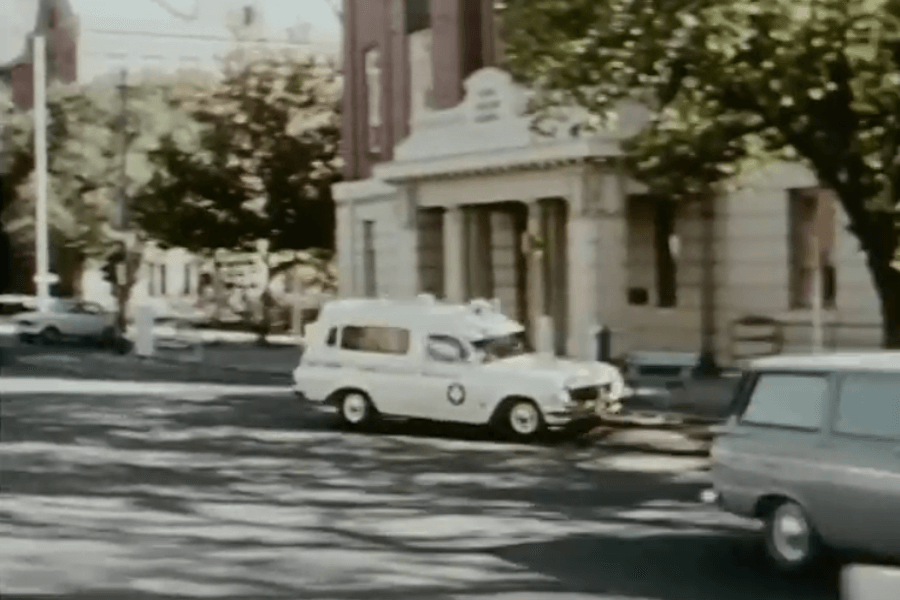
By the time they reached shore, emergency services were already waiting. Paramedics carefully lifted Rodney, speaking in urgent bursts. One look told them everything—they had only minutes to keep him alive.
He was loaded into the ambulance with bandages soaked red and breathing shallow. Monitors beeped frantically. No one spoke of odds. They just moved—fast, focused, relentless.
The shark had nearly taken his life. Now, it was up to machines, surgeons, and chance. Rodney had escaped the ocean—but not yet death. What came next would demand everything he had left.
462 Stitches: A Human Patchwork
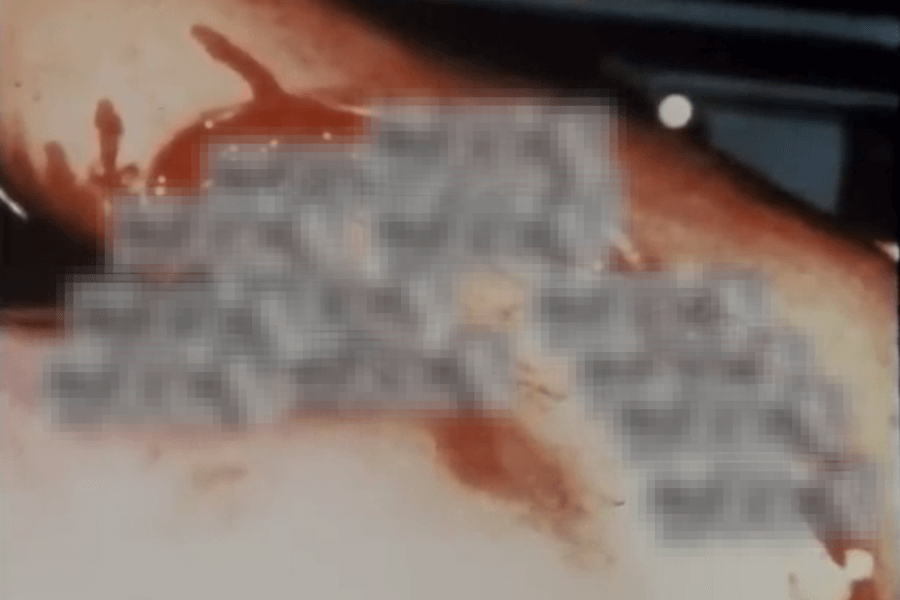
When Rodney arrived at the hospital, doctors were stunned. His body looked like it had been torn apart by machinery. No one expected him to live—certainly not in the condition he was in.
The shark’s bite had ripped through his abdomen, chest, and arm. Internal organs were exposed. Muscles were destroyed. His survival, even now, felt impossible. But his pulse remained steady.
Surgeons worked for hours, stitching his body back together—462 times, to be exact. He wasn’t just a patient; he was a medical anomaly. And there was still more surgery to come.
Surgeons Battle to Save Him
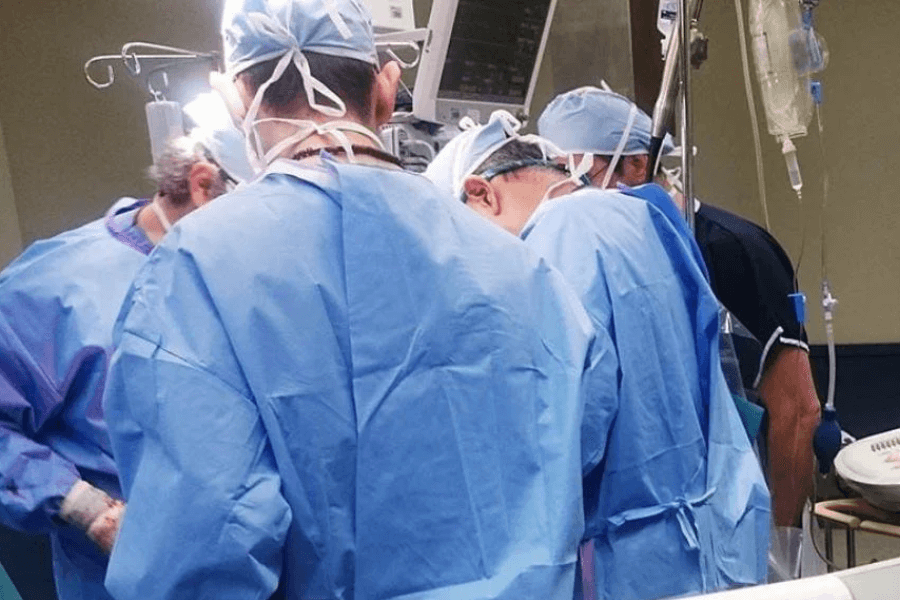
The operating room became a war zone. One team focused on stopping the bleeding, while others tried to rebuild what the shark had destroyed. The damage touched nearly every part of him.
Doctors had never seen a shark attack victim survive wounds this severe. Every step of the procedure was improvisation. Skin was peeled back. Ribs were realigned. Internal bleeding was relentless.
Despite the trauma, Rodney’s vital signs held. It was clear: his body wanted to live. But living through that night was only step one. The road ahead would test him even more.
Endless Operations, Unimaginable Pain
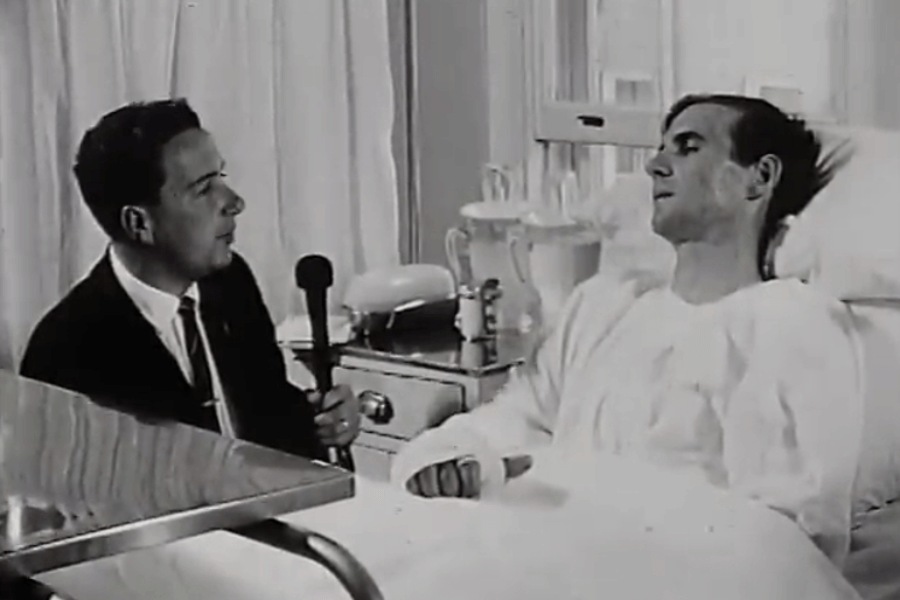
Rodney didn’t leave the hospital quickly. Over the following months, he endured operation after operation—each one painful, risky, and exhausting. His body became a battlefield of stitches, scars, and metal clamps.
Pain was constant. So were nightmares. Even while sedated, the memory of the attack haunted him. Waking was no relief—just a return to a body in torment.
Some days, healing felt impossible. Progress was slow. Infection was a threat. But Rodney didn’t give up. The man who survived the shark was now surviving the aftermath with a fight just as fierce.
The Doctors’ Shock: “You Should Be Dead”
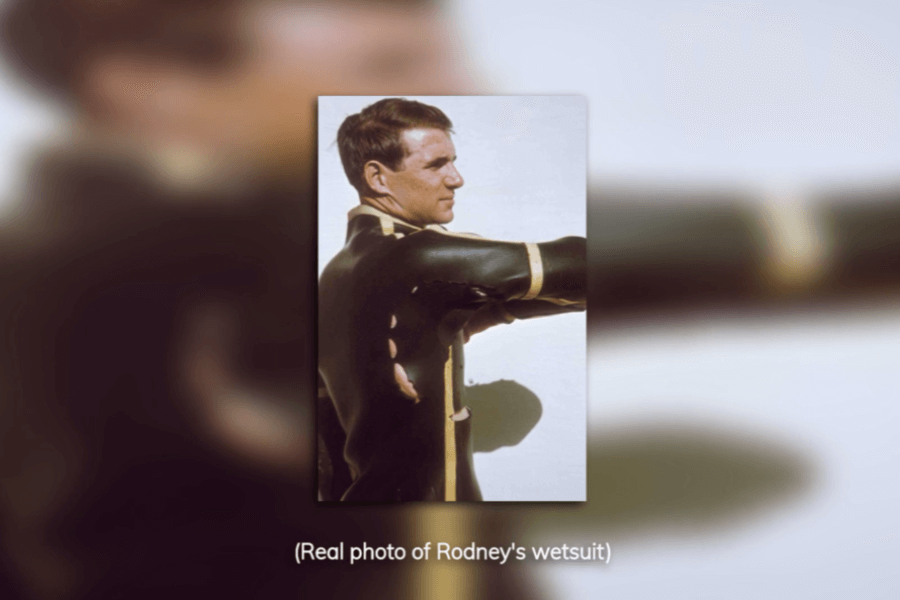
Many hospital staff admitted it openly: Rodney shouldn’t have survived. They’d never seen anyone with such massive trauma arrive conscious, let alone speak after what he endured in the ocean.
Every doctor had the same reaction—first disbelief, then awe. Some took photos of his injuries for medical journals. Others just stared, unable to understand how he was still breathing.
Rodney’s survival became more than a case study; it became a legend. But for him, it wasn’t about records or reputation. It was about staying alive to see another day.
Scars and Skin Grafts: A Living Puzzle
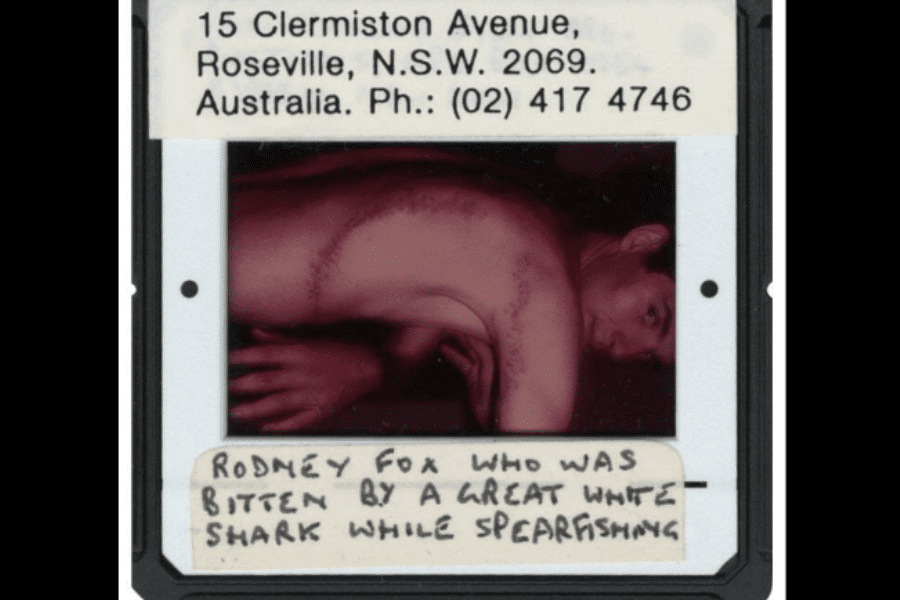
Rodney’s body had to be rebuilt, piece by piece. Surgeons used up every resource they had to repair wounds on his chest and back. His torso became a patchwork of surgical ingenuity.
He carried scars not just across his skin but into his bones. Metal rods and wire held him together. The shark had nearly destroyed him, but medicine kept him alive.
Each new scar told part of the story. Some people looked away. Rodney didn’t. He saw the marks for what they were: proof he had survived the impossible.
Mental Wounds that Lingered
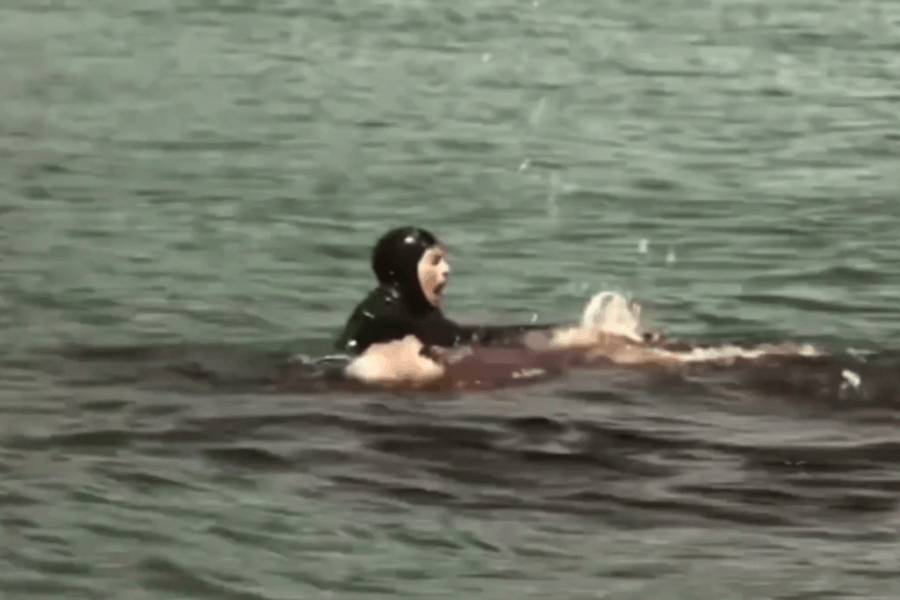
Physical pain could be dulled, but the fear stayed. At night, Rodney would relive the attack—the teeth, the darkness, the helplessness. The ocean had nearly killed him. It still haunted him.
He developed what would now be recognized as PTSD. Loud splashes triggered panic. Even seeing a swimming pool stirred memories. The trauma didn’t leave his body when the stitches did.
He didn’t talk much about the fear back then. But it was there, constant and heavy. Still, he knew avoiding it forever wasn’t the answer. He had to face the sea again.
Rodney Tried To Swim Again
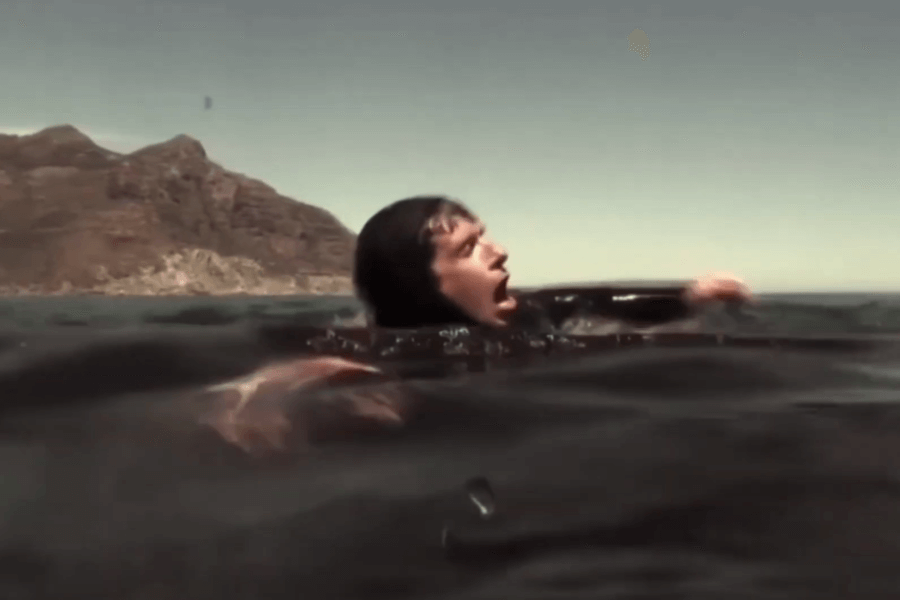
Every shadow in the water brought back the image of the shark. The fear wasn’t irrational—it was earned. Rodney had seen death underwater. Now, every ripple seemed like it could return.
He tried swimming again but found himself paralyzed. Breathing underwater brought back the taste of blood, the sound of silence, the pressure of the bite. It was like drowning in memory.
But facing the ocean again was necessary—not just for healing, but for reclaiming control. And that step, though terrifying, would lead him toward something greater than fear.
One Thing He Needed To Do
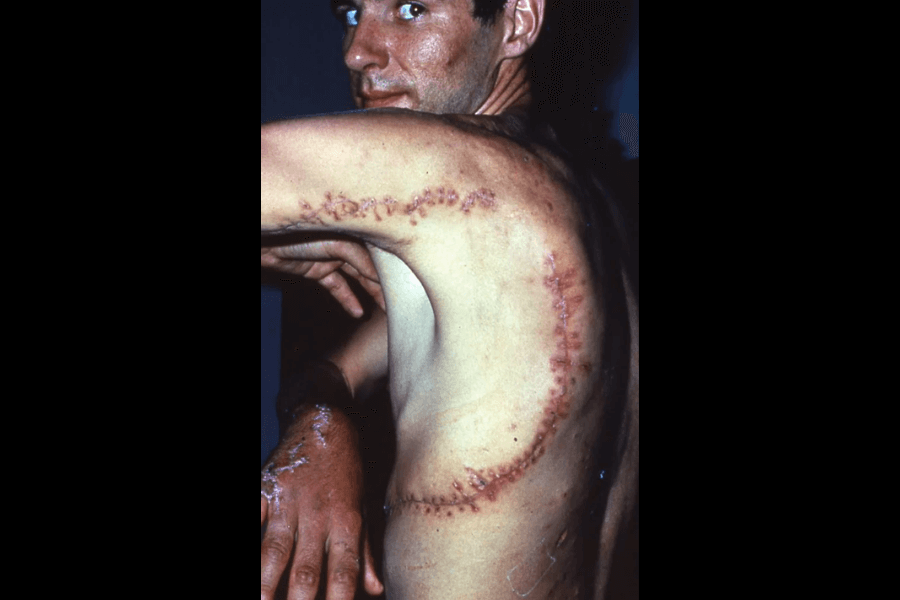
Rodney never forgot the shark—he never could. But he learned to carry the experience instead of running from it. The fear didn’t vanish—it became part of his strength.
His scars were constant reminders, but they no longer only meant pain. They meant survival. They meant resilience. They meant that he had endured what few ever had—and lived to tell it.
Still, his journey wasn’t over. There was one thing left to do—return to the ocean not as a victim, but as something new. What came next would surprise everyone.
Facing the Ocean Again
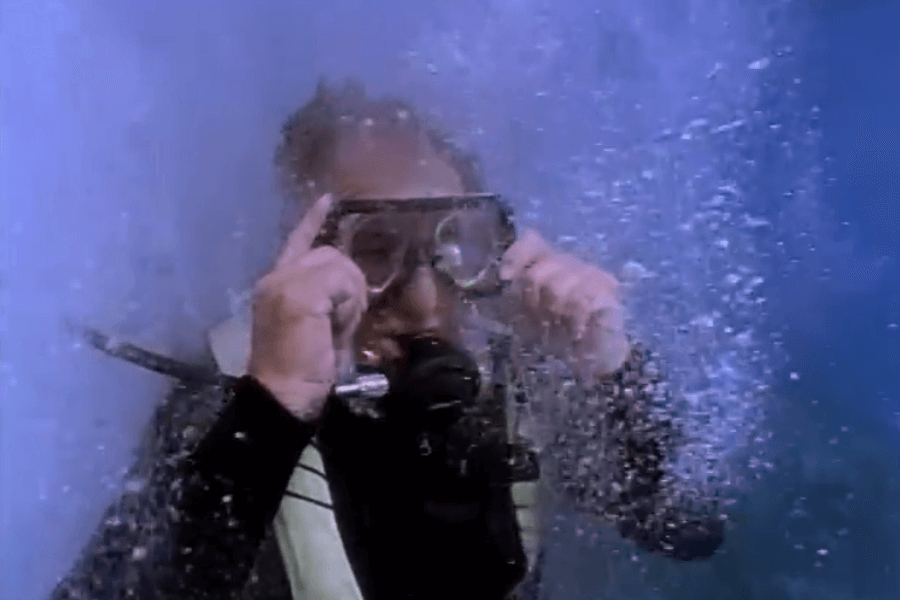
As part of his recovery, Rodney was told to return to the water, not to fish, but to heal. Swimming would strengthen his lungs, even if it stirred up deep fear.
At first, the idea of reentering the sea felt unbearable. The ocean was where everything had gone wrong. The thought of swimming in open water triggered panic and resistance.
But slowly, he stepped back in. First pools, then shorelines. Each visit chipped away at his fear. Once a place of terror, the sea began to feel familiar again, almost peaceful.
Why He Didn’t Hate the Shark

Rodney’s outlook began to shift. While many expected hatred, he didn’t blame the shark. It had acted on instinct, not malice. The real enemy wasn’t the predator—it was misunderstanding.
That change became clear during a fishing trip with Alf Dean, a fellow sportsman. On that outing, Alf killed five great white sharks—trophies, not threats. Rodney was shaken.
The slaughter felt wrong. He couldn’t justify it. Despite nearly being killed by one, Rodney saw sharks as complex, essential creatures, not monsters. That trip planted a seed he couldn’t ignore.
A Sudden Obsession With Great Whites
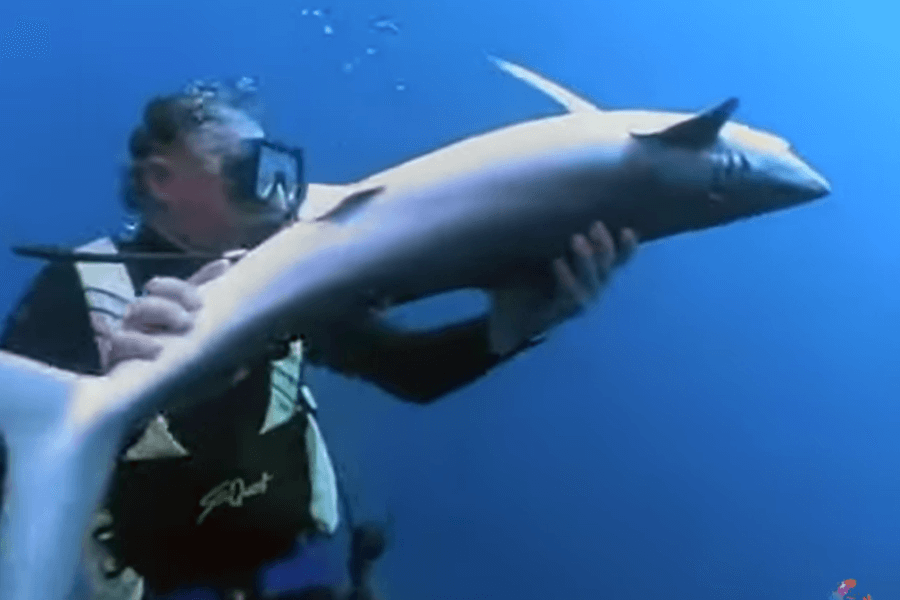
The phrase “the only good shark is a dead shark” echoed everywhere in 1960s Australia. But Rodney no longer believed it. He had seen something few others had survived—and understood.
Rather than destroy them, he wanted to study them, understand them, and even protect them. The shift from victim to observer came quietly but powerfully, reshaping everything about his future.
He realized the shark hadn’t tried to kill him out of cruelty. It simply didn’t know what he was. That distinction would drive his next chapter—and the beginning of something unprecedented.
The Birth of a New Mission
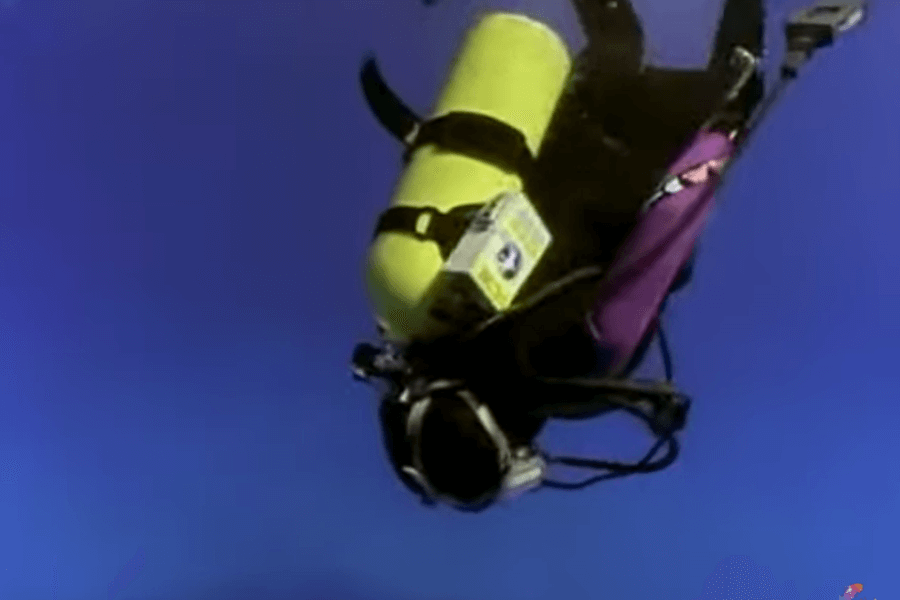
Rodney’s shark encounter didn’t just leave scars—it left questions. How could he help others understand these animals? Was it possible to study them up close, without becoming bait?
That question became a mission. He began exploring ways to observe great whites safely. He wanted people to see sharks without fear or fiction.
What started as curiosity grew into something bigger: a lifelong purpose. To protect sharks, he first needed to face them again. That meant building a new kind of frontier—beneath the waves.
Creating the First Shark Cage
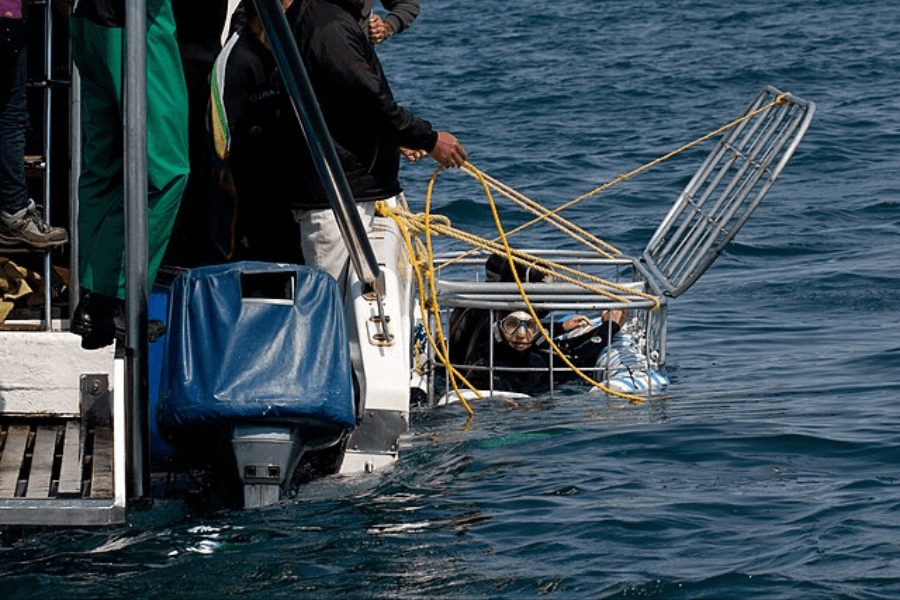
The first shark cage wasn’t high-tech. It was made from scrap metal and pure determination. But Rodney’s idea was revolutionary: a barrier that allowed humans to witness great whites—alive and close.
He tested it himself, descending into the sea with nothing but steel bars between him and the animals that nearly killed him. It wasn’t safe, but it worked.
These early dives changed everything. For the first time, people could film, photograph, and study sharks in their own world. What Rodney saw below would forever shift how science and the public saw sharks.
Diving Again—With the Beast

Rodney didn’t just watch sharks—he swam with them. The same species that almost ended his life now swam meters from him, and he stared back without panic, only purpose.
His dives offered something rare: real-time observation of behavior, movement, and interaction. Each moment underwater became data—a story that challenged old myths about bloodthirsty monsters.
He was no longer just surviving; he was documenting, educating, and opening minds. But his work wouldn’t stop at personal dives. It was time to scale the mission—and bring others along for the journey.
Up Close With Apex Predators
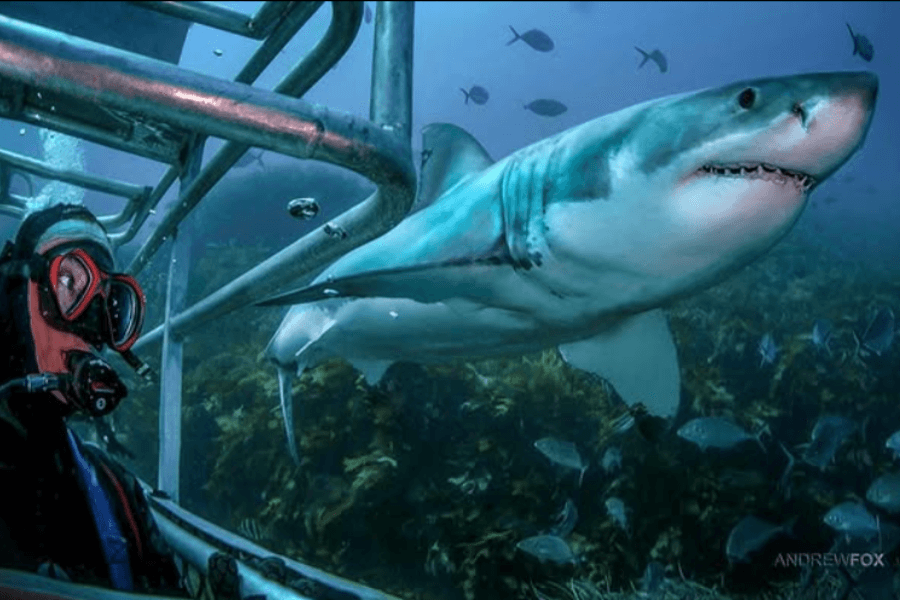
Rodney’s footage of sharks up close was groundbreaking. No longer blurry myths, they were real animals—elegant, powerful, curious. And perhaps most importantly, misunderstood by nearly everyone on land.
These weren’t indiscriminate killers. They had patterns, responses, and limits. Watching them in their environment revealed a balance that challenged popular fears. Rodney was changing the narrative with every dive.
But video alone wasn’t enough. To truly shift perspectives, Rodney needed science. He needed research. What came next would take his mission from personal to global.
Gathering Data That Changed Science
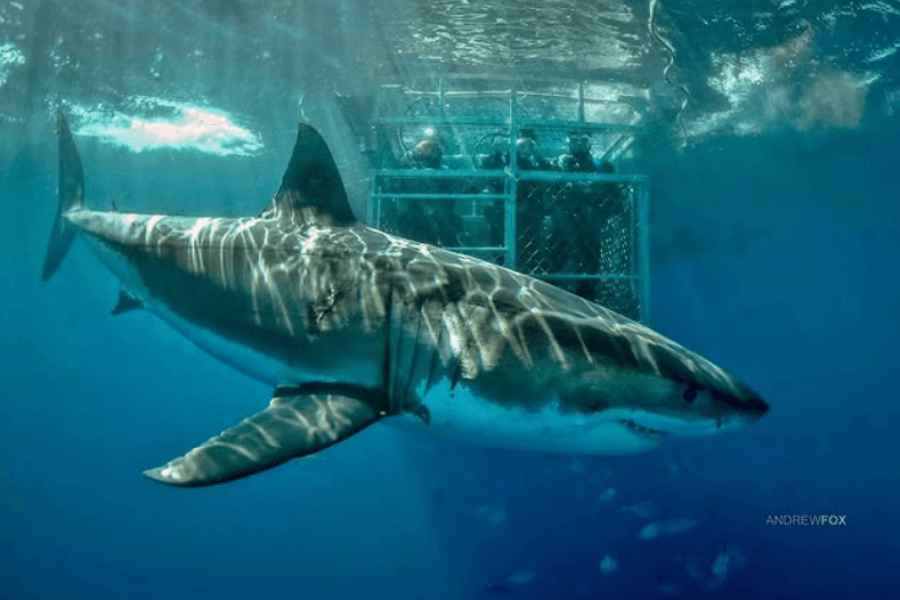
Rodney’s dives helped researchers collect the first close-range data on great whites. He recorded how they swam, circled, and reacted. Suddenly, science had access to firsthand behavioral evidence.
He worked with marine biologists, providing photos, notes, and observations that filled in major gaps in shark research. His injury once shocked doctors, but now his insight amazes scientists.
The man nearly a victim was now a vital partner in shark science. But this wasn’t just about research. Rodney wanted the public to see what he saw.
Coexisting With the Ocean’s Most Feared
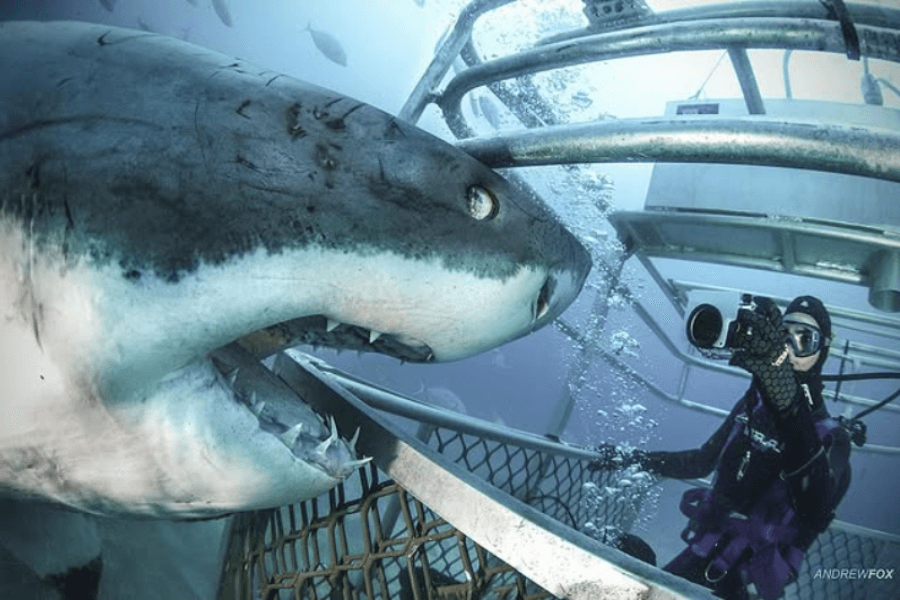
Rodney never preached fear. Instead, he spoke about coexistence—how sharks aren’t villains, just predators doing what nature designed them to do. His message resonated with scientists, divers, and even skeptics.
He didn’t sugarcoat the danger. Sharks are powerful. But they’re more interested in eating fish than humans. They’re also crucial to marine ecosystems. Protecting them meant protecting the ocean.
His mission was growing. It wasn’t just about one man’s trauma—it was becoming a movement. And that movement needed a home, a foundation, and a name to carry it forward.
Establishing the Rodney Fox Shark Research Foundation
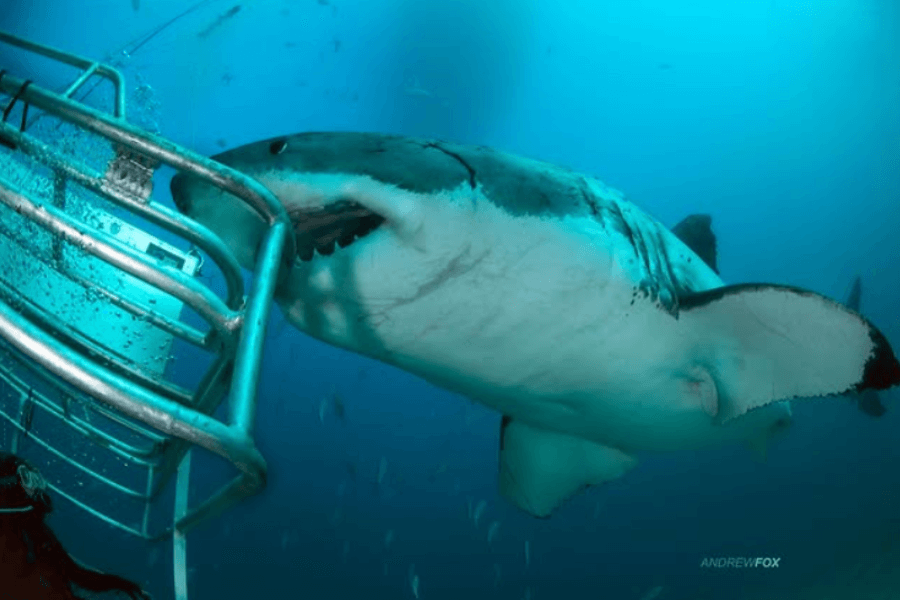
Rodney’s work needed more than footage and firsthand stories—it needed a home. So he founded the Rodney Fox Shark Research Foundation, focused on conservation, education, and scientific discovery.
The foundation provided a platform for collaboration between divers, scientists, and environmentalists. It wasn’t just about sharks anymore; it was about understanding marine life through responsible, fearless exploration.
This wasn’t a vanity project. It was a serious scientific institution with one goal: to protect what people feared, and help the world see sharks as more than villains in ocean horror stories.
Shark Expert for Jaws and Beyond
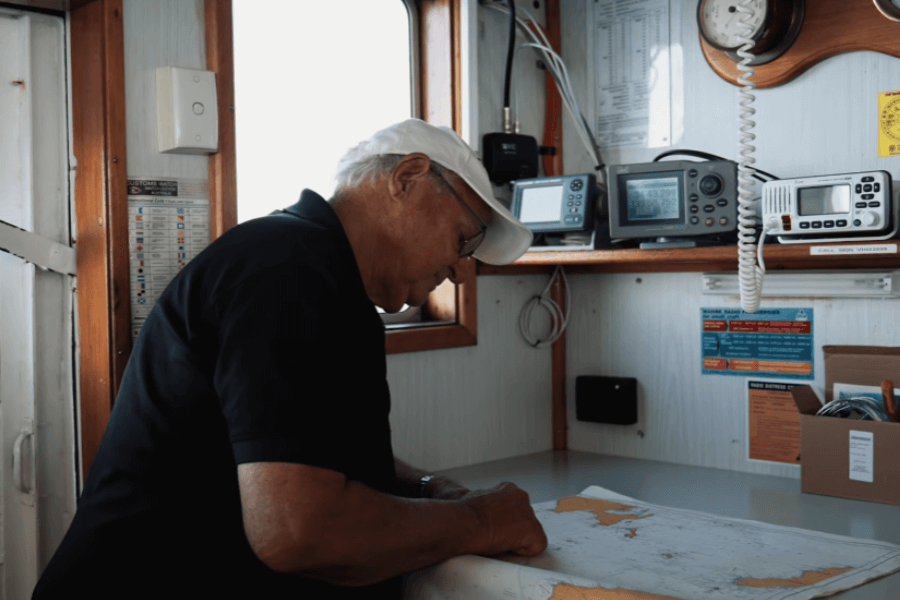
When Hollywood came calling for Jaws, they needed someone who knew sharks. Not the myths—the truth. They turned to Rodney, the man who had survived what most couldn’t imagine.
He advised filmmakers on shark behavior, helping shape one of the most iconic thrillers ever. Ironically, the film he helped inform reignited fear—the very thing he worked to dispel.
Still, Rodney saw the opportunity. He used the attention to speak facts over fiction, guiding public interest toward understanding rather than fear. His voice reached farther than any shark cage ever could.
From Survivor to Consultant
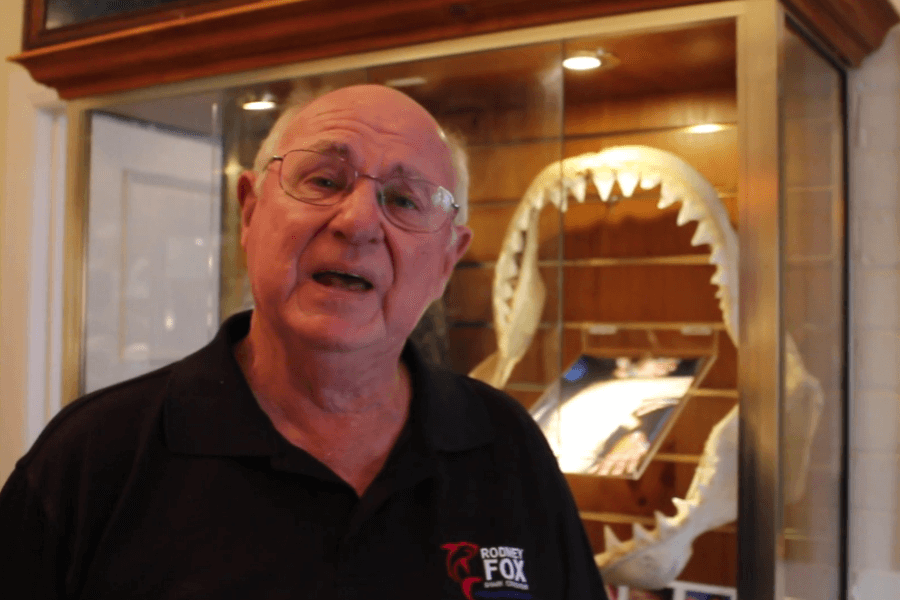
Beyond Jaws, Rodney became a global consultant for nature documentaries, marine studies, and television features. His firsthand experience and scientific approach made him an invaluable source in shark-related storytelling.
Media wanted the survivor. Scientists wanted the observer. Conservationists wanted the advocate. Rodney, somehow, was all three—his perspective grounded in trauma, recovery, and relentless curiosity about the ocean’s top predator.
He didn’t chase fame. It found him. But he used it wisely—to educate, to challenge fear, and to highlight that survival wasn’t the end of his story—it was just the beginning.
Son Andrew Fox Joins the Mission
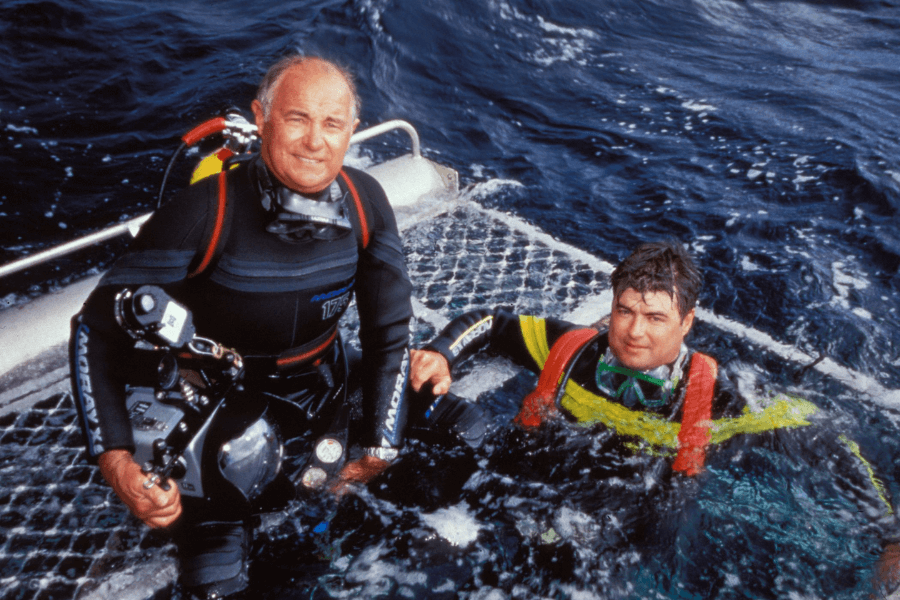
Rodney’s son, Andrew Fox, didn’t just inherit a name—he inherited a calling. Watching his father’s journey, Andrew stepped into the water with the same respect and mission-driven mindset.
Andrew expanded the foundation’s work, blending conservation, tourism, and research into a sustainable, global effort. He built on what Rodney started, using technology and data to deepen their impact.
Together, they bridged generations of shark advocacy. Where Rodney once swam alone in a steel cage, Andrew now led teams with advanced tools—but the goal remained the same: understanding over fear.
Partnering With Marine Scientists Worldwide
Rodney knew he couldn’t do it alone. He brought researchers from around the globe into the fold, offering access to shark habitats that were once too dangerous or simply inaccessible to study.
These partnerships fueled groundbreaking discoveries. Tagged sharks were tracked across oceans, their migratory paths mapped, and their feeding patterns documented. Rodney’s cage diving opened new doors for marine science.
The same man who was once left for dead in the ocean was now helping to decode it. With every expedition, he found more support for the species he had once escaped.
Tagging, Tracking, and Understanding Behavior
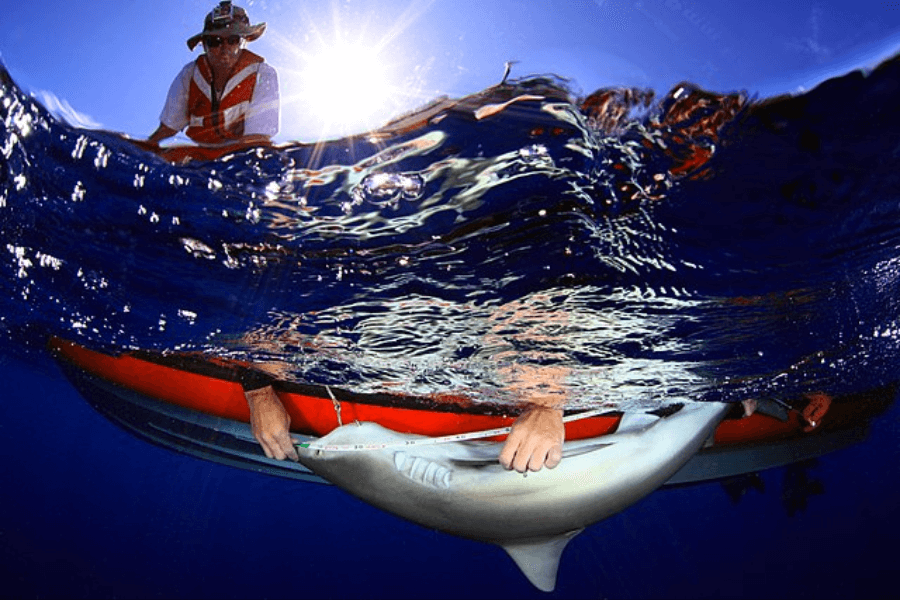
Through tagging programs, the foundation monitored sharks’ movement, hunting zones, and travel habits. The data began to answer questions that had baffled scientists for decades—and sparked entirely new ones.
They discovered how far great whites traveled, how deep they dived, and how rarely they encountered humans. The science was clear: fear was often based on myth.
Rodney’s work didn’t erase danger but replaced mystery with information. And that shift—from terror to truth—was exactly what he hoped to offer the public next.
Educating the Public About Sharks
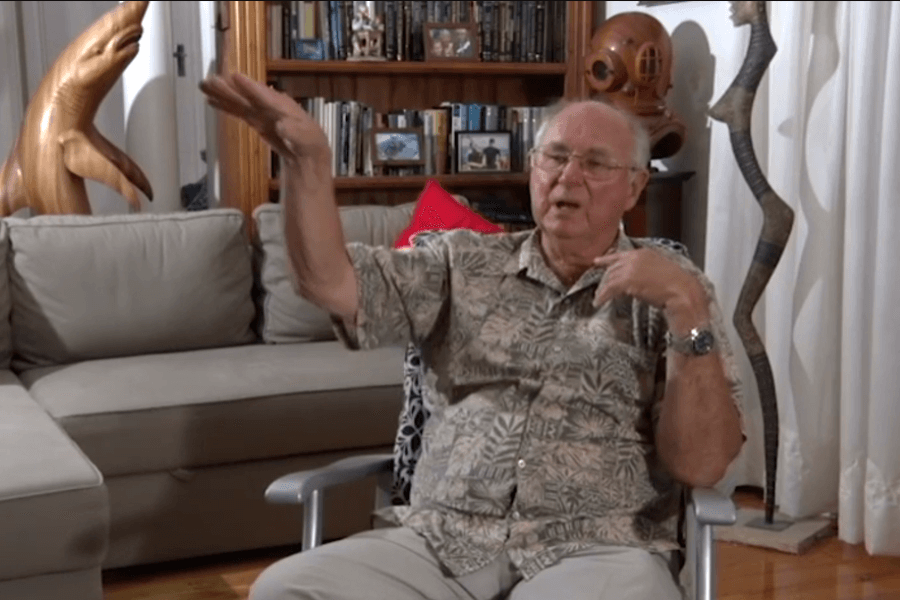
Rodney became a teacher as much as a researcher. Through documentaries, talks, and tours, he showed audiences that sharks were not monsters but marvels—majestic, misunderstood, and vital to the sea.
He didn’t shy away from his trauma. Instead, he used it to connect with skeptics. “If I can forgive sharks,” he’d say, “maybe it’s time we understand them.”
His message gained traction. Schools, conservation groups, and divers began to echo it. And from there, something unexpected happened—fear started to fade.
Turning Fear Into Fascination
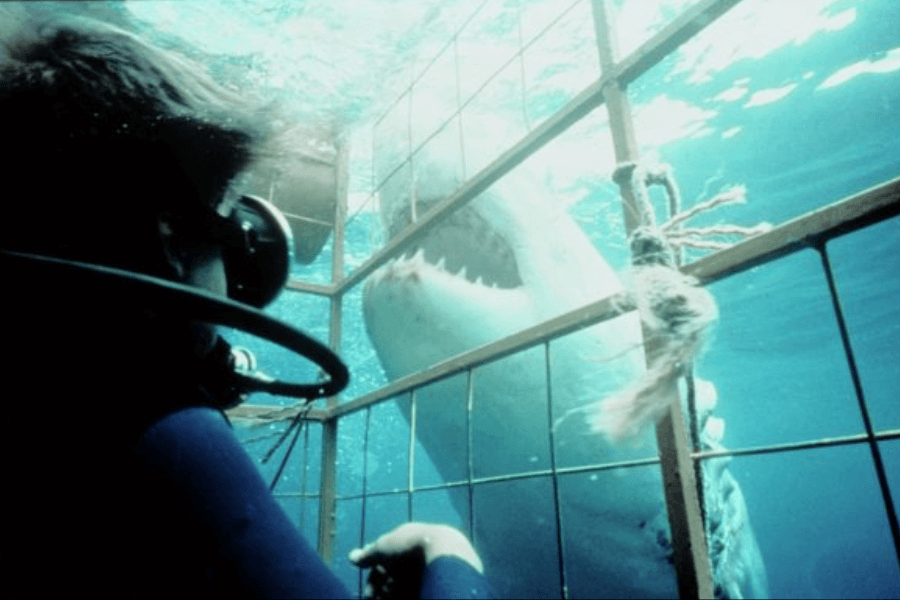
For many, seeing a shark was once a nightmare. Thanks to Rodney, it became a goal. Cage diving became a tourism. Documentaries became a fascination. What was feared became something worth protecting.
People traveled across the world to see what Rodney saw. And when they did, they came back with questions, not just adrenaline. Curiosity began replacing dread—one dive at a time.
But Rodney wasn’t done yet. He had educated thousands and influenced science, but now, the spotlight called. The world wanted his story.
Interviews, Books, and Global Fame
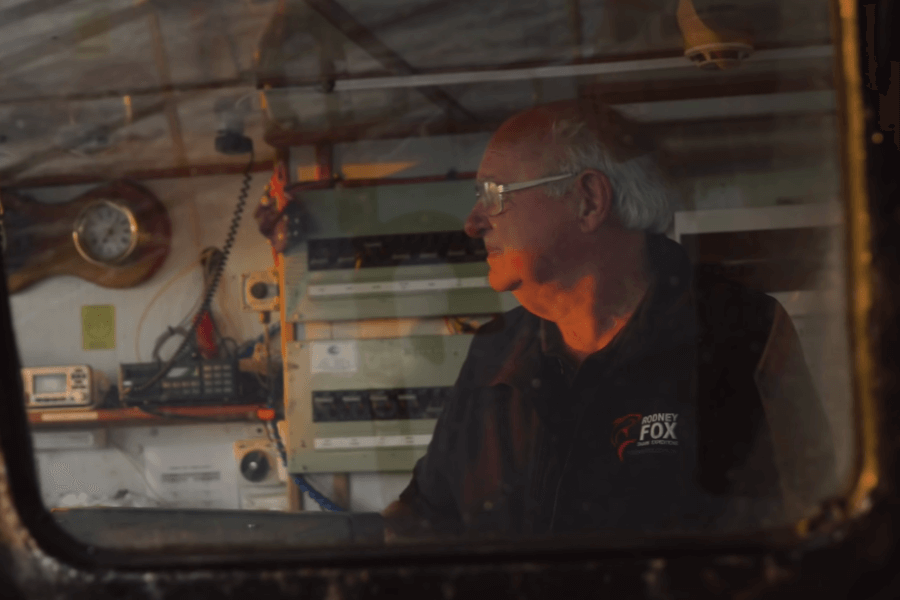
Rodney shared his story in interviews, books, and on stages worldwide. He didn’t dramatize the event—he didn’t need to. The truth was already astonishing enough.
His message resonated across generations. Young divers, marine biologists, and curious minds all heard the same theme: fear isn’t weakness, and sometimes, understanding your fear leads to your life’s greatest purpose.
But Rodney’s impact wasn’t measured by camera flashes. It was seen in new generations of ocean advocates, especially the one closest to him. His legacy was becoming something much bigger than himself.
Adventures for Tourists and Scientists
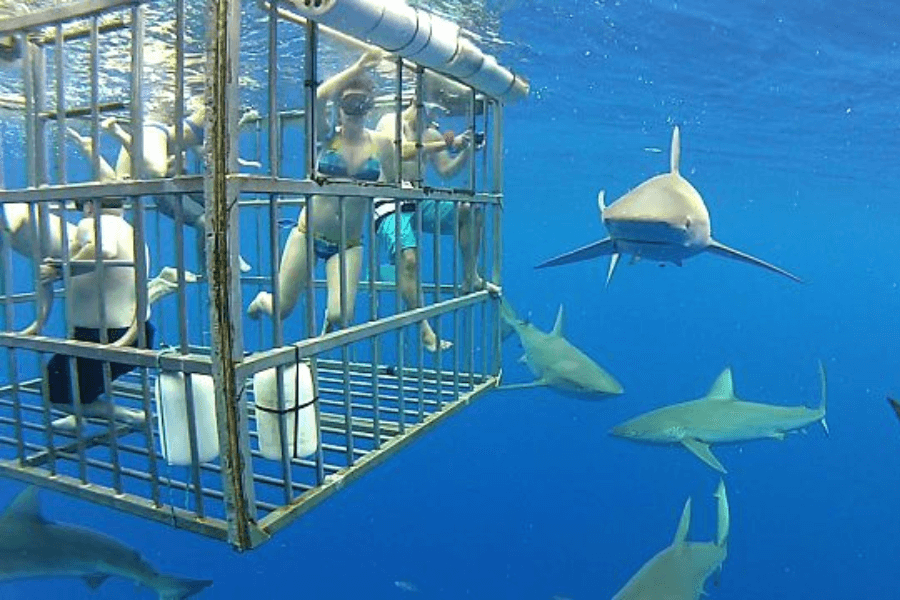
Rodney’s shark cage expeditions evolved into something extraordinary: a rare bridge between science and adventure. Tourists came for the thrill; researchers came for the access. Both left with a new perspective.
Expeditions allowed guests to enter the shark’s world safely. Divers viewed great whites in their natural habitat, not out of fear but fascination. It was education disguised as adrenaline.
For scientists, it meant reliable access to observe behaviors once only imagined. For tourists, it was unforgettable. For sharks, it was a chance to be seen, not hunted, a bold, lasting shift in how we engage with nature.
Generations of Shark Advocacy
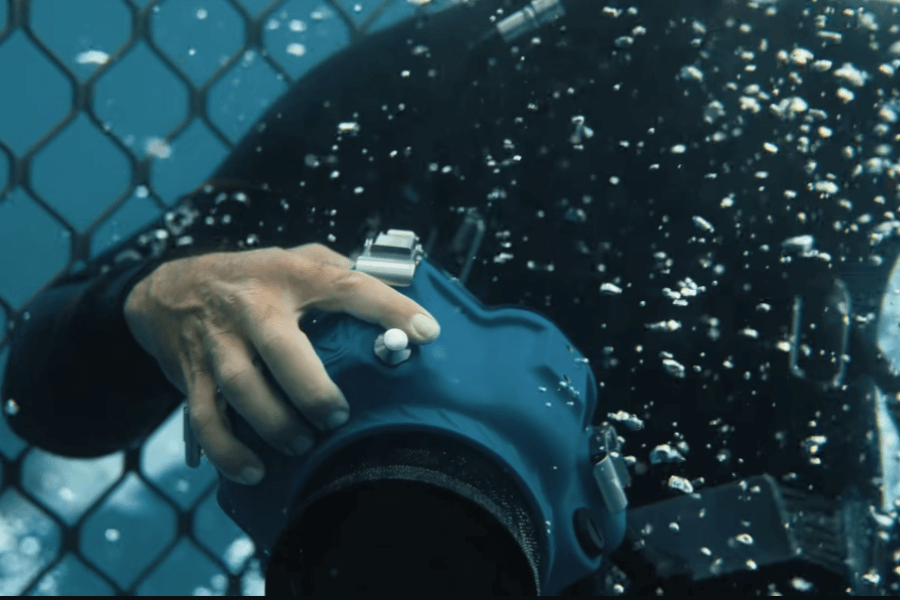
Rodney’s foundation wasn’t just a passion project—it became a cornerstone of modern shark research and education. Schools, scientists, and conservationists across the globe continue to benefit from its work.
Through tagging programs, documentaries, and diving expeditions, the Fox family helped replace fear with fascination. Their efforts created new voices in conservation and a platform for those willing to listen.
Legacy isn’t just what you build—it’s who continues it. And in Andrew, Rodney found a partner ready to carry forward the mission, one dive and one story at a time.
The Foundation’s Expanding Reach
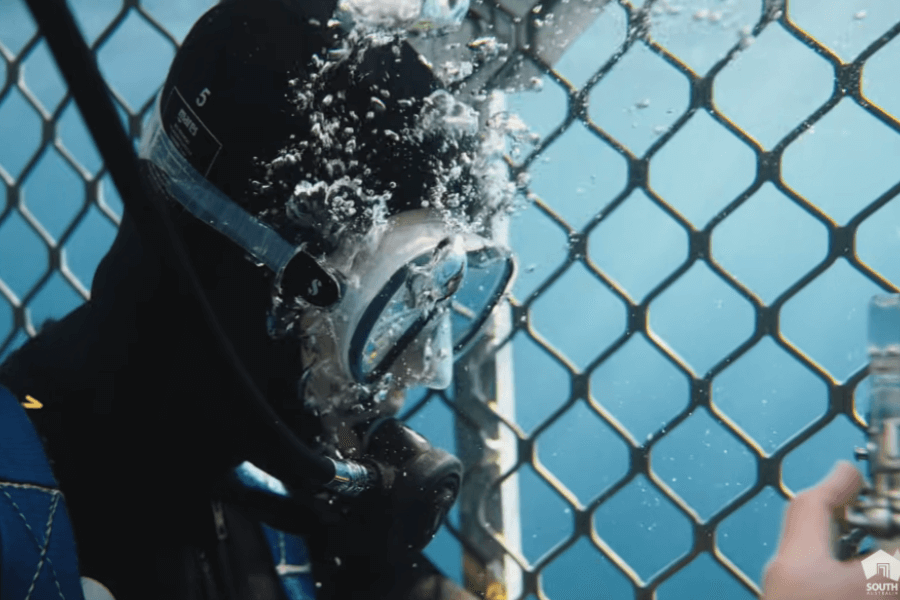
Today, the Rodney Fox Shark Expeditions and Foundation attract both scientists and tourists. It’s a rare place where adrenaline, education, and environmentalism collide under the shadow of great white fins.
People come to face their fears, but they leave with understanding. Rodney’s story sets the stage, but the ocean writes the rest. Every encounter brings new data and deeper appreciation.
The work goes on. New discoveries, partnerships, and advocates all swim forward in the current Rodney began. But even legacies need reflection—especially ones forged in survival.
Worldwide Impact on Conservation
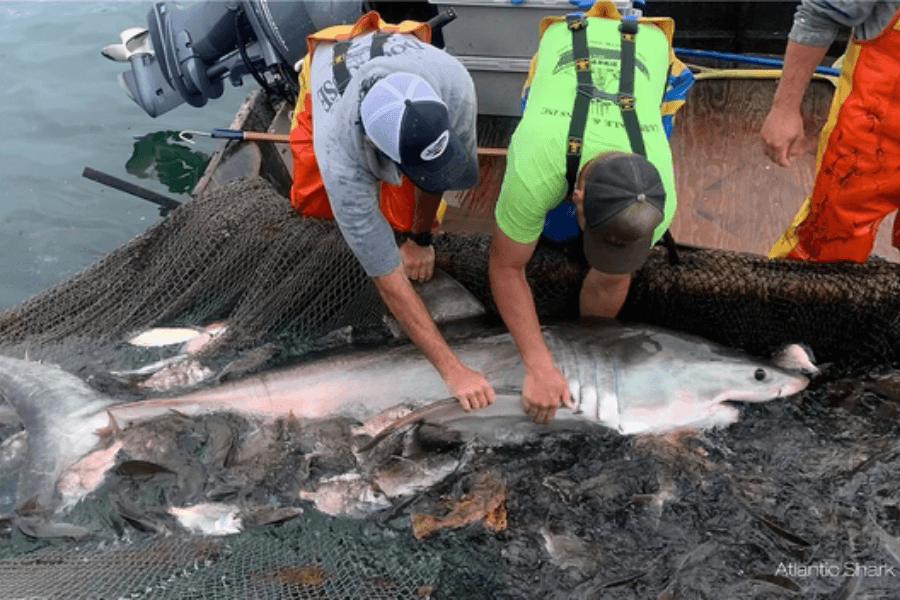
Rodney’s work helped shift global shark policy from extermination to preservation. His message—that great whites weren’t monsters, but misunderstood keystone species—found its way into classrooms, governments, and conservation laws.
Through his foundation and outreach, he influenced marine protection efforts worldwide. Countries began restricting shark hunting. Tagging programs flourished. The predator he once escaped became a protected creature.
He didn’t just survive a shark attack—he helped sharks survive us. His legacy lives in marine sanctuaries and protected waters, and every researcher still asks deeper questions instead of sharpening harpoons.
What Rodney Learned From the Shark
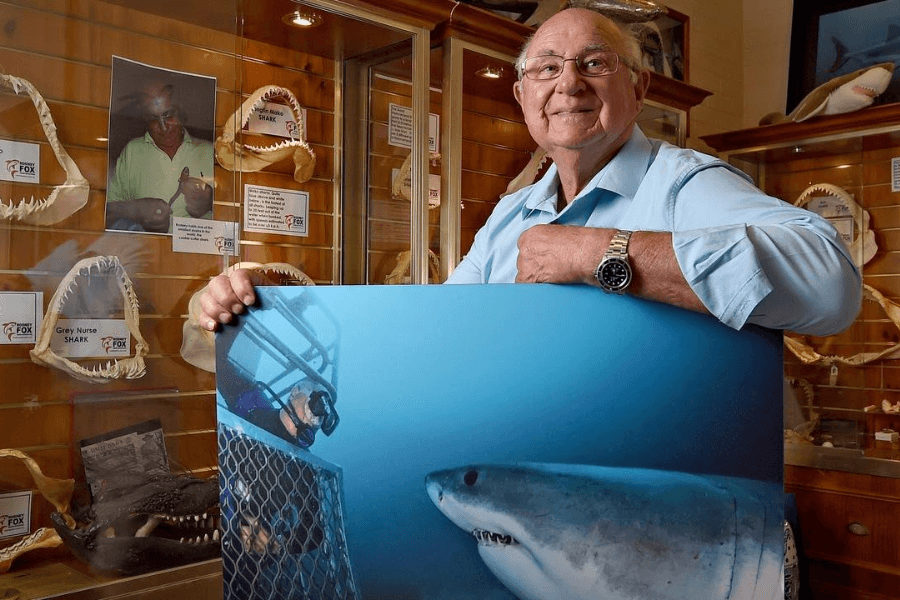
Rodney didn’t see the shark as a villain. It had acted on instinct, not cruelty. In understanding that, he found clarity: the ocean’s predators follow purpose, not malice.
That lesson shaped his outlook. Instead of seeing himself as unlucky, he saw himself as transformed. The attack became a catalyst, not a curse—a violent beginning to a meaningful journey.
The shark taught him more than fear. It taught him humility, respect, and the fragility of life. And in that understanding, Rodney found something few ever do: purpose rooted in pain.
The Survivor Who Became the Guardian
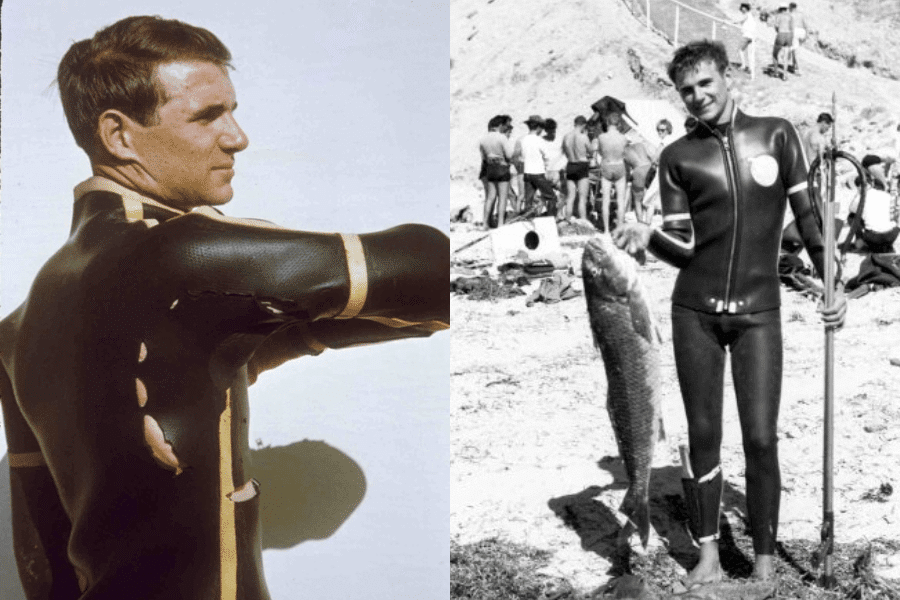
Rodney Fox was never just a man who survived. He became a steward of the very world that almost took him. A protector. A translator between land and sea.
He bore the scars of violence, yet chose to advocate for peace. His message wasn’t loud, but powerful: We can choose understanding over fear, even after being hurt.
Rodney’s transformation from prey to protector defines his legacy. He didn’t conquer the shark; he listened to it. In doing so, he helped the world see something truly worth saving.
